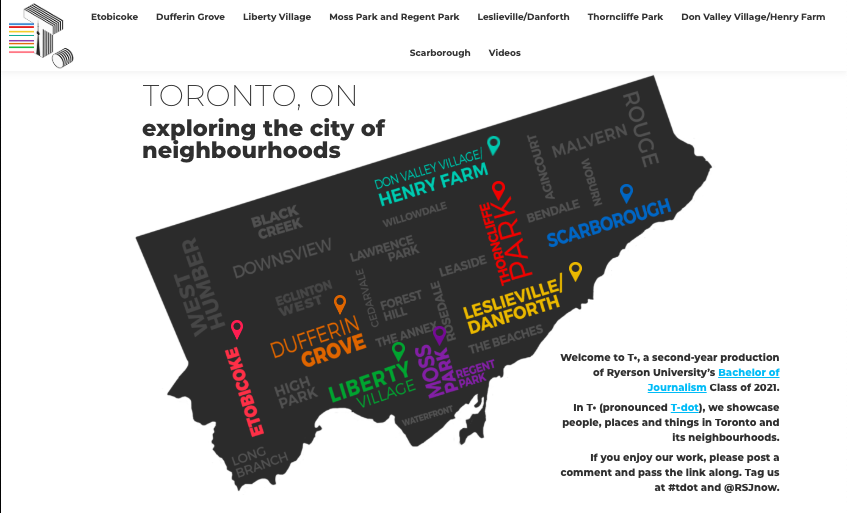I joined the faculty of the School of Journalism at Ryerson University in August, 2001, and will never forget meeting my first post-graduate journalism class minutes before the second World Trade Centre explosion on 9/11. (I gave the class a break and tried to figure out what to do next. I walked to the office of the then-chair of the School of Journalism, Vince Carlin; his TV was on. I said, “How do you teach journalism on a day like this?” On the screen, the second tower disintegrated. He looked at me, brow furrowed: “‘A day like this?'” His eyes returned to the screen and I to my classroom.)
I eventually figured how to teach feature writing, media law and ethics for both graduate and undergraduate students, and in January, 2020, I celebrated my final teaching term before retirement by returning to the first two undergraduate courses I taught, two decades ago: the second-year required introduction to feature writing and current affairs (JRN 272), and the third-year feature reporting workshop (JRN 303), Curriculum innovation was a feature in both courses, with traditional approaches to feature reporting and long-form writing blended with multimedia publication and enriched by best pedagogical practices for an attention-challenged generation.
I led a collaboration of several j-school colleagues
in recreating a second-year journalism class
as the production lab of a multimedia magazine, “T.” ,
launched in 2019 to spotlight Toronto’s diverse neighbourhoods.
I will retire from my tenured appointment when my final sabbatical year ends on July 31, 2021. But I love teaching above all else and hope I keep doing it for decades yet, through guest appearances and one-off teaching projects.
Here’s why: teaching young adults is the greatest, most rewarding job on earth – not just because of the impact I might have on their career success and job satisfaction, but because of the way my own life continues to be enriched by working with smart, energetic people at a formative moment in their development as citizens of the planet Earth.
Curriculum Innovation
I have a passion for changing the content and form of teaching. My habitual responses to descriptions of “the way we teach here” tends to be something annoying like: “That’s terrific, but next year, how about this….?”
That’s because the continuing evolution of curriculum for journalism and other media students is not just a matter of keeping both students and teachers on their toes, but, more essentially, a vital response to world-altering shifts in audience behaviours, business challenges, creative opportunities and social crises.
I have urged fellow journalism educators worldwide to shift their programs’ paradigms away from discrete (and potentially obsolete) skill sets toward teaching journalism as a distinctive approach to finding, recognizing and communicating knowledge. (Shapiro, 2015)
As chair of the School of Journalism from 2011-2016 (and before that, as its undergraduate program director), I led colleagues in transforming the School’s approach to curriculum away from single-platform specialization focused on legacy news media toward an integrated and “a la carte” approach to the arts of reporting, editing, production—and thinking. The purpose: to prepare students for the widest possible range of vocations that count on the driving forces of journalism at its best: independence in discovery, a passion for accuracy, coherent story-telling, and the responsible shifting of truth from private to public domains.
“Making a Difference: How Journalism Matters,” is a unique, blended-learning course in the form of a current-affairs TV series, covering the purpose, ethics and law of journalism. I led a team of gifted, dedicated fellow-educators, producers and students to develop the course with funding by a Ryerson grant for curriculum innovation. It launched in Fall 2017 and is now required for undergraduate and graduate journalism students and available as a Ryerson open elective as well as to online continuing-education students anywhere. The course won the 2018 award of the Canadian Association for University Continuing Education for one-semester credit programming.
As Associate Dean for Undergraduate Education and Student Affairs in Ryerson’s Faculty of Communication and Design (FCAD), my work centred on innovation in both curriculum and extra-curricular support for students at the centre of his work. Under my leadership, the faculty introduced unprecedented synergies in interdisciplinary courses and embarked on a shift toward more effective, integrated delivery of complementary services and resources to foster students’ success during an especially challenging epoch.
References
Shapiro, Ivor. 2015: “To Turn or to Burn: Shifting the Paradigm for Journalism Education.” In Toward 2020: New Directions in Journalism Education ed. Gene Allen, Stephanie Craft, Christopher Waddell & Mary-Lynn Young. Toronto: Ryerson Journalism Research Centre.
